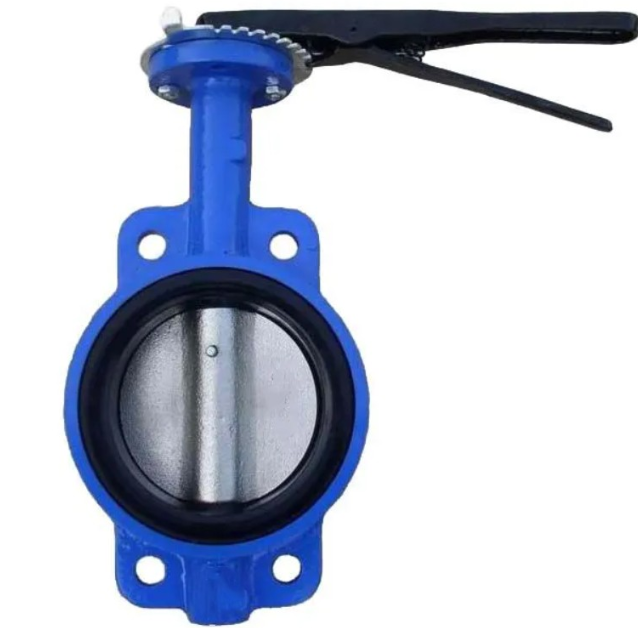lugged butterfly valve
Understanding Lugged Butterfly Valves A Comprehensive Overview
Lugged butterfly valves are an integral component in the world of fluid control and management. Renowned for their reliability and efficiency, these valves play a crucial role in various industries such as water treatment, oil and gas, and pharmaceuticals. This article delves into the design, functionality, applications, and benefits of lugged butterfly valves, highlighting their importance in modern systems.
What is a Lugged Butterfly Valve?
A lugged butterfly valve is a type of quarter-turn valve that comprises a rotating disc or vane that regulates flow. Unlike standard butterfly valves, lugged versions have lugs or threaded holes integrated into the body. These lugs allow for secure bolting to flanged piping systems, enabling easy installation and removal without the need to drain the pipeline. This design feature is particularly advantageous in systems where maintenance might be necessary, as it provides a way to replace or service the valve without interrupting the flow of fluid through the pipeline.
Design and Construction
The design of a lugged butterfly valve typically includes three main components the valve body, the disc, and the actuator. The valve body is often made from durable materials such as stainless steel, cast iron, or PVC, chosen based on the application's specific requirements. The disc is positioned at the center of the valve and rotates on a spindle; when the actuator rotates the disc, it opens or closes the flow path.
Lugged butterfly valves come in various sizes and pressure ratings, accommodating a wide range of applications. The lugs that distinguish these valves from standard butterfly valves facilitate a stable connection to the piping system while maintaining alignment and resistance to misalignment stresses.
How Does it Work?
The operation of a lugged butterfly valve is straightforward. When the actuator turns the handle, the disc rotates 90 degrees, either completely opening or closing the flow path. In the fully open position, the disc is parallel to the direction of the flow, minimizing resistance and allowing for efficient fluid passage. Conversely, in the closed position, the disc is perpendicular to the flow, effectively blocking it.
One of the key advantages of the lugged design is that it allows for easy maintenance. If a valve needs to be replaced or repaired, the lugs provide anchor points for bolts, enabling technicians to detach the valve from the pipeline without needing to drain the system. This feature is particularly beneficial in large industrial settings where process interruption can lead to lost production and increased costs.
Applications of Lugged Butterfly Valves
lugged butterfly valve

Lugged butterfly valves are widely used across various industries due to their versatility and efficiency. Some common applications include
1. Water Treatment Plants These valves control the flow of water in treatment processes, ensuring proper regulation and minimal pressure loss.
2. Chemical Processing Their ability to handle corrosive and abrasive fluids makes them ideal for chemical applications, where reliability is paramount.
3. Oil and Gas In both upstream and downstream processes, lugged butterfly valves are utilized for flow regulation, isolation, and control.
4. HVAC Systems They help manage airflow in heating, ventilation, and air conditioning systems, contributing to energy efficiency and optimal performance.
5. Food and Beverage Industry The ease of cleaning and reliability of lugged butterfly valves make them suitable for sanitary processes in food and beverage production.
Benefits of Lugged Butterfly Valves
The advantages of using lugged butterfly valves are numerous. Firstly, their space-saving design allows for installation in tight spaces, making them ideal for various configurations. Additionally, the easy install-and-remove feature enables significant maintenance flexibility, ultimately reducing downtime in industrial applications.
Moreover, lugged butterfly valves typically have lower pressure drops compared to other valve types, enhancing system efficiency. Their straightforward operation allows for quick response times, further contributing to overall process optimization.
Conclusion
In summary, lugged butterfly valves represent a vital component in the fluid control landscape. Their unique design, ease of maintenance, and wide range of applications make them invaluable in several industries. Understanding their functionality and benefits allows engineers and system designers to make informed decisions regarding fluid management solutions. As industries continue to evolve, the reliability and efficiency of lugged butterfly valves will remain crucial in meeting the demands of modern infrastructure.
-
The Key to Fluid Control: Exploring the Advantages of Ball Valves in Industrial SystemsNewsJul.09,2025
-
The Versatile World of 1, 2, and 3 Piece Ball ValvesNewsJul.09,2025
-
Stainless Steel Ball Valves: The Ideal Choice for Efficient Flow ControlNewsJul.09,2025
-
Optimizing Fluid Control with Ball Float ValvesNewsJul.09,2025
-
Manual Gate Valves: Essential for Control and EfficiencyNewsJul.09,2025
-
Everything You Need to Know About Butterfly ValvesNewsJul.09,2025
-
The Versatility of Wafer Type Butterfly ValvesNewsJul.08,2025




